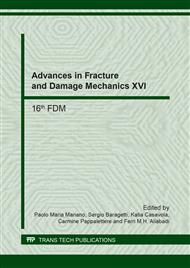p.248
p.252
p.256
p.260
p.264
p.268
p.272
p.279
p.283
Effect of Temperature on Fatigue Strength Characteristic and Fatigue Mechanism in Laser Welded Dissimilar Stainless Steels Joint
Abstract:
Fatigue strength characteristic of laser welded joint between austenitic stainless steel and ferritic stainless steel was studied at room temperature and 300 °C.The results showed that fatigue strength at 300°C was higher than that at room temperature in lower applied stress amplitude region. Fatigue crack mainly initiated at stress concentration part at room temperature. However, fatigue crack origin changed toward to the base material and the heat affected zone with increasing testing temperature. Increase in ductility of the base material and the weld metal induced by increasing testing temperature reduces stress concentration effect and resulted in change in fatigue mechanism. Appropriate weld position in a component with temperature gradient can be considered by minimizing the effect of stress concentration and taking into account degradation of strength due to increase in temperature.
Info:
Periodical:
Pages:
264-267
Citation:
Online since:
September 2017
Authors:
Keywords:
Price:
Сopyright:
© 2017 Trans Tech Publications Ltd. All Rights Reserved
Share:
Citation:


